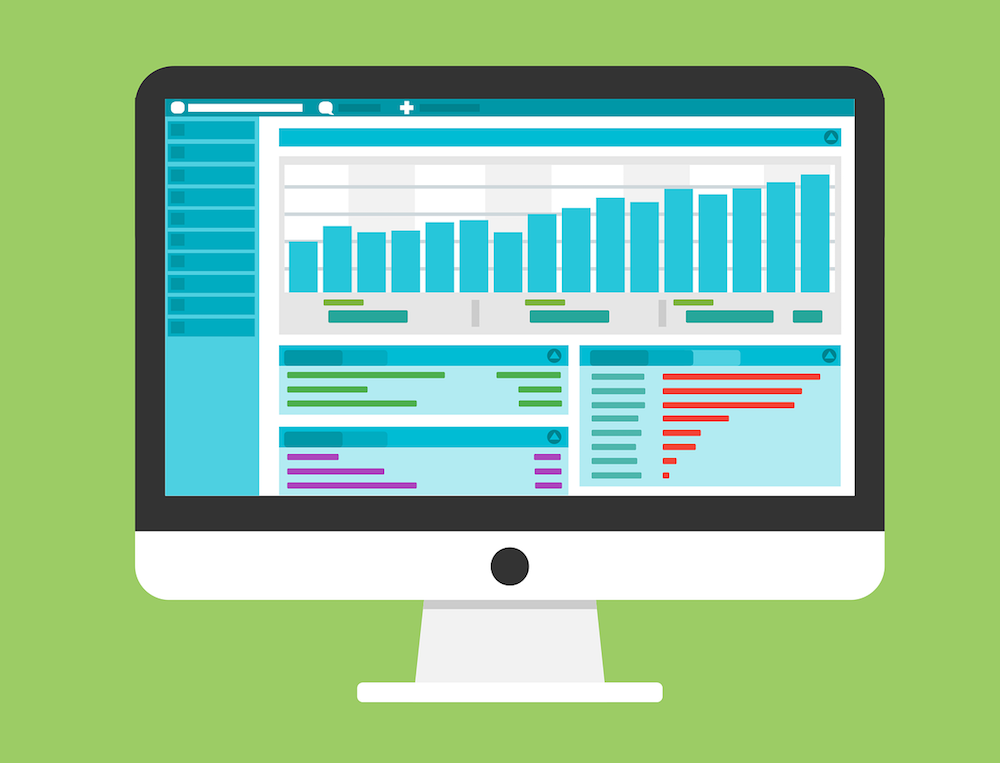
94% of small businesses, 93% of B2Bs, and 77% of B2Cs use content marketing in some form or another.
Yet many are still struggling to create content that actually boost their rankings. Why? Well, for one, they’re not using data to power their content.
Data offers insights into what customers are reading about, where they’re going to get their information, and what type of content they’re consuming (and believe it or not, it’s more than just blogs). Without understanding these variables, any content strategy is merely a guessing game at best.
If you’re serious about improving your SEO using data-driven content marketing, or you just want to understand how to use data to drive better marketing results, here’s what you need to know.
Why Data-Driven Content Is Important
The amount of content being published on the web each day is staggering. It’s reported that each second around 1,400 blogs are posted, 277,000 tweets are sent, 2,460,000 Facebook posts are shared, 26,380 users review something on Yelp, and 4,000,000 search queries are received by Google.
But how much of this content is actually impacting its intended audience?
Most businesses that dip their toes into content marketing do a decent job of creating content, but few actually track their content’s metrics or assess their overall ROI. This is partly due to a lack of understanding about how data affects content.
Being able to monitor trends, collect data about platform engagement, and track review or news sites for pertinent information is essential to developing content that actually reaches people.
Data can help answer questions like, “Who are we selling to?” “What topics resonate with them?” and “Who and where are they getting their information from?”
Popular retailer Kohl’s, for example, uses both internal and external data to track customer behavior in-store and then creates targeted email campaigns based on their findings. They also analyze their online data to find relevant content to send to customers in multiple mediums.
Without data, marketing to a mass audience is a shot in the dark. You may hit on relevant content, but you’ll never be able to repeat your results. Data helps pinpoint real-time user activity so you can narrow down your marketing efforts in meaningful ways.
But just because data is essential to seeing results doesn’t mean every company knows how to successfully use it to drive their content..
How Companies Use Data-Driven Content Marketing
One of the biggest driving factors for content creation is SEO. Search engines like Google and Bing often reward websites that publish dynamic content with better rankings. This is partially why so many companies are now using frequent, fresh content to improve their online visibility.
So where does data fit into the process?
Some digital marketers use web crawlers and other data scraping techniques to scan competitors’ sites and analyze trending topics. Typically, they’ll scrape specific company pages or even social media networks to see what people are saying about certain topics, companies and/or products and then create content relevant to those trends.
If they find a mention related to their business, industry or product, they might extract data like related posts, comments, URLs, hashtags, and even tweets and number of likes. They will then use that data to generate relevant content.
They will even use data to perform content audits on their own sites for better ROI. Kissmetrics actually uses data scraping to create a list of all of their own blog’s content to determine which topics rank the best and which titles and keywords have the highest click-through rates. They also use that data to build a list of the leading influencers in their industry.
Data scraping can also be used for content related things like:
- Getting product reviews from retailers to determine customer pain points
- Finding news sites to curate content for your own website visitors
- Crawling sites for statistics for general marketing research
While the application of data-driven marketing is vast, the real question for many businesses still remains the same: How will we use this data to create content and what type of content should we create?
For the majority of businesses, the output of this data is blogging. Surveys show that 76% of B2C businesses have a blog and/or participate in frequent writing-related content marketing efforts. While blogging is a significant generator of SEO and inbound leads, it’s not the only thing that can reach customers.
In fact, limiting yourself to only blogging means you restrict the power of data to drive your content, and in turn, cap your ability to see real results.
Why Data Needs More Than Blogs
Over half of all B2C businesses consider creating engaging content a significant obstacle to growing their business, but the content itself might not be the problem – it could be the way content is being presented.
82% of B2C marketers produce videos as part of their content marketing strategy, 61% rate digital newsletters as an effective tool parallel to blogging, 40% of small businesses use webinars and/or webcasts as a part of their marketing strategy, and 90% of B2C marketers use social media in their content marketing programs, making it the most popular platform to publish content.
Studies show that when B2B buyers do research to make buying decisions, they actually look for white papers, case studies, and webinars more often than blogs. And retail customers more often use online reviews and social media than blogs to determine whether or not they’ll buy from you.
Some companies are taking advantage of this by incorporating other forms of data-driven content on their sites to generate leads.
Intuit, for example, tracks data about the financial habits of users in different age ranges in order to create shareable infographics, like this one comparing the financial habits of Millennials versus Gen Xers.
True data-driven content marketing should give you a solid understanding of your target customers, and it’s very possible that your customers are using social media to share videos and infographics instead of reading your blog. It’s also very possible that your target customers are looking at review sites instead of browsing Google for related articles.
That’s why the data collection process is so important to content creation. Without understanding data, you can’t predict which content or medium will have the most impact on your ROI. But you can use data to pinpoint your audience’s habits and prioritize your content development accordingly.
And if you’re looking to stay ahead of your competitors, you’ll need that data to tell you what’s working and what’s not.
Final Thoughts
Gathering as much information as possible about your customers’ online and offline behaviors, reading patterns, and even which platforms they use is essential to your content development.
If you’re focusing on creating content in order to improve your SEO or to generate leads, you need data to drive the creation process, or at the very least, to evaluate the success of your content’s performance so you know the real value of your investment.
Data should also inform your chosen delivery method, and it’s important to remember that blogging is not the be-all and end-all for content marketing. If your data shows you that another method is more effective, trust those results. Don’t follow the trends just because everyone else is doing it. Do it because the data tells you it works.


You must be logged in to post a comment.